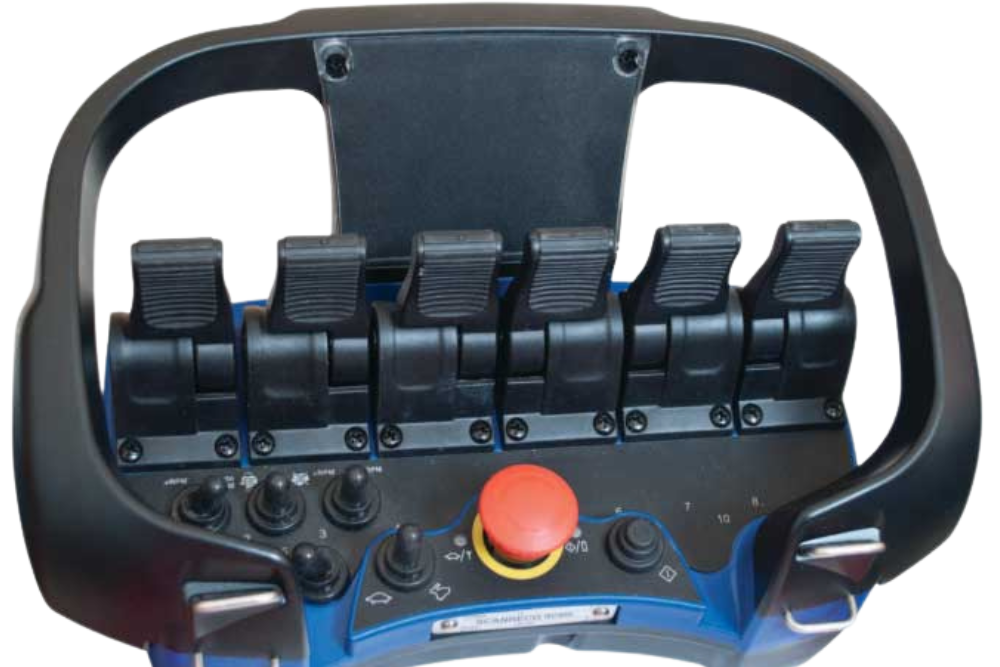In the dynamic world of industrial and mining operations, where precision, efficiency, and above all, safety are paramount, the evolution of technology has demanded transformative solutions. Among these, the prominence of radio remote control systems stands out as a pivotal innovation, revolutionising how machines are operated, particularly in hazardous environments. As we delve into the topic of remote control technology, it becomes evident that its integration not only streamlines operations but also mitigates potential risks associated with manual operation.
Removing the operator from the vicinity of the machinery
One of the key aspects defining the superiority of radio remote control systems lies in their ability to remove operators from the immediate vicinity of the machinery they control. This fundamental shift from direct physical presence to remote operation significantly reduces exposure to hazardous environments, thereby safeguarding human lives. For industries and mining sites where operational environments are inherently perilous, such as those rife with toxic gases or unpredictable geological conditions, this capability becomes indispensable in ensuring worker safety.
Safety standards at the heart of each system
At the core of radio remote control systems lies an unwavering commitment to safety. Recognising the diverse array of hazards inherent in industrial and mining settings, these systems are engineered to meet stringent safety standards. Implementation of safety categories, as mandated by industry norms, ensures that remote systems are not just efficient but also inherently safe. From redundant backup elements to dynamic emergency-stop mechanisms, every facet of these systems is meticulously designed to preemptively address potential safety lapses.
Redundancy measures
One of the critical elements in ensuring the safety of remote control systems is the concept of redundancy. By integrating backup elements or duplicating critical components, the reliability of these systems is markedly enhanced. Whether through active redundancy, where backup systems operate simultaneously, or passive redundancy, which kicks in upon the failure of primary systems, redundancy serves as a fail-safe mechanism, ensuring uninterrupted operation even in the face of technical glitches.
Emergency Stop Functionalities
Emergency-stop functionalities form another cornerstone of safety in remote control systems. Whether triggered actively by operators or passively by the system in response to anomalies such as radio interruptions or internal errors, these mechanisms serve as vital safeguards against potential mishaps. By enforcing maximum delay times and employing techniques such as Hamming Distance calculations for error recognition, remote control systems ensure swift and decisive responses to emergent threats.
Safe Reading of Data
The safe transmission and interpretation of data lie at the heart of remote control technology. From employing dynamic signal readings to redundant signal distribution channels, every step is taken to ensure that data transfer is not just secure but also error-free. By adhering to safety conformance categories and instituting fail-safe protocols, remote control systems uphold the highest standards of reliability and safety.
The integration of radio remote control systems has ushered in a new era of safety and efficiency in industrial and mining applications. By removing operators from harm’s way, adhering to stringent safety standards, and leveraging cutting-edge technologies, these systems epitomize the marriage of innovation and safety. As industries continue to evolve, one thing remains certain: the power of radio remote control systems to transform operational paradigms while safeguarding human lives will continue to be felt across diverse sectors, shaping the future of industrial and mining operations.
If you need expert advice on radio control system installation, get in touch with the friendly team at Aus-Tec, your leading radio and remote control specialists.

